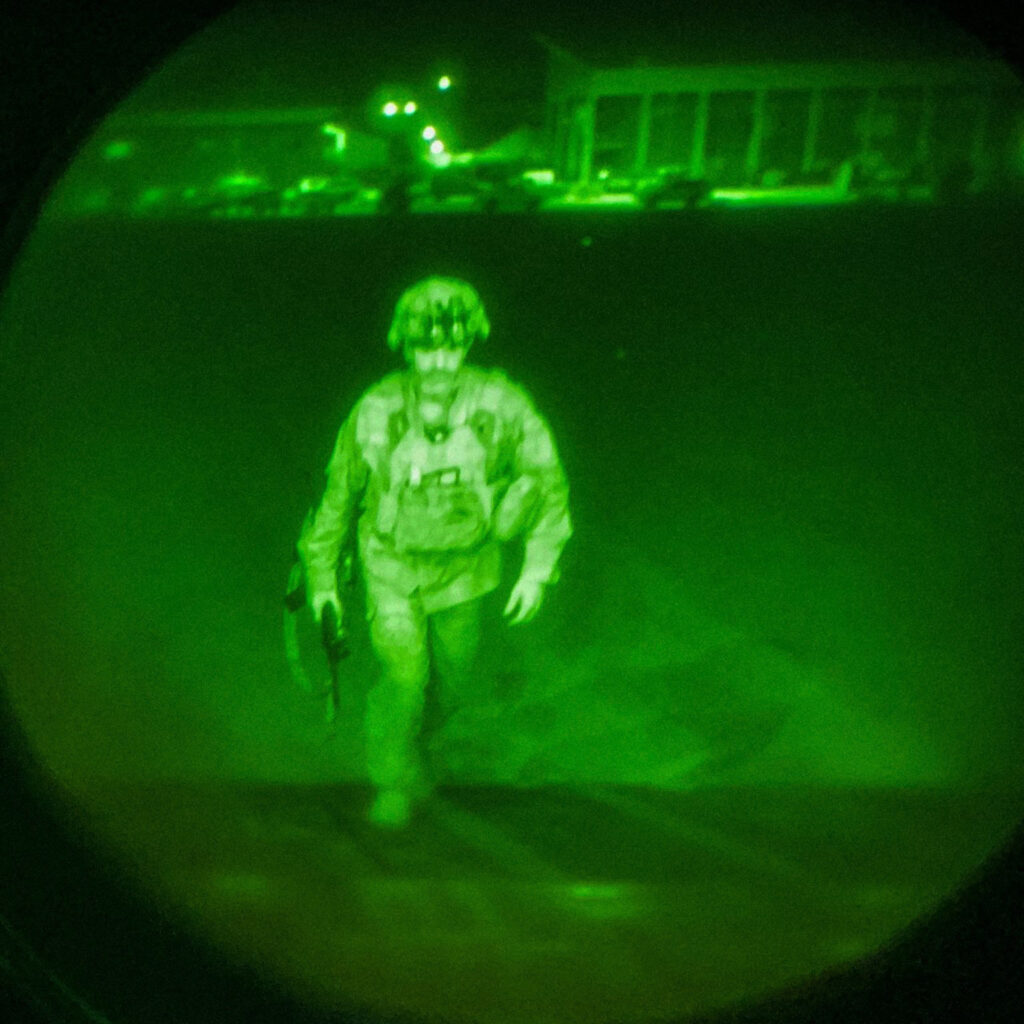
Major General Chris Donahue was the last soldier to leave Afghanistan after two decades of war. He is not standing at the head or the end of a line of troops. He is not off to the side, watching his troops board the plane. He is alone.
Whether the photo was staged or not, it is powerful. It is a visual remembrance of the end of two decades of war.
There are iconic photographs of war. The naked Vietnamese girl running after a napalm attack or the helicopter atop the US Embassy in Viet Nam. There were powerful photographs from Korea and World War II showing the brutal ugliness of war and the camaraderie of the troops.
US Army Master Sergeant Max Beilke (Ret’d) was photographed and recorded as the last combat soldier to leave Viet Nam. He was killed on 911 at the Pentagon when one of the hijacked planes crashed into the building. Beilke was a civilian working on veteran affairs. The last man out of Viet Nam was one of the casualties that led to the War on Terror in Afghanistan.
Before photography, artists traveled with the troops, drawing and later creating paintings of battles and military life. During WWII, artists were deployed to record daily life on the ground, along with photographers and film artists.
The visual art of American warfare spans almost three centuries. Some of the art reminds us of the ugly brutality of combat. Art may be well crafted but is not always beautiful. War may be honorable and glorious, but there is no beauty.
Written history will determine if the war in Afghanistan was worth the blood, death, treasure, and anguish. The visual images show us the truth. There are probably millions of still and video images from the media, assigned military photographers or videographers, and the troops. There are probably drawings or paintings.
There is no record of the first combat soldier to step into Afghanistan. There is only the last, walking alone onto a plane. A soldier geared for combat, like the first soldier to step foot in that sandbox.